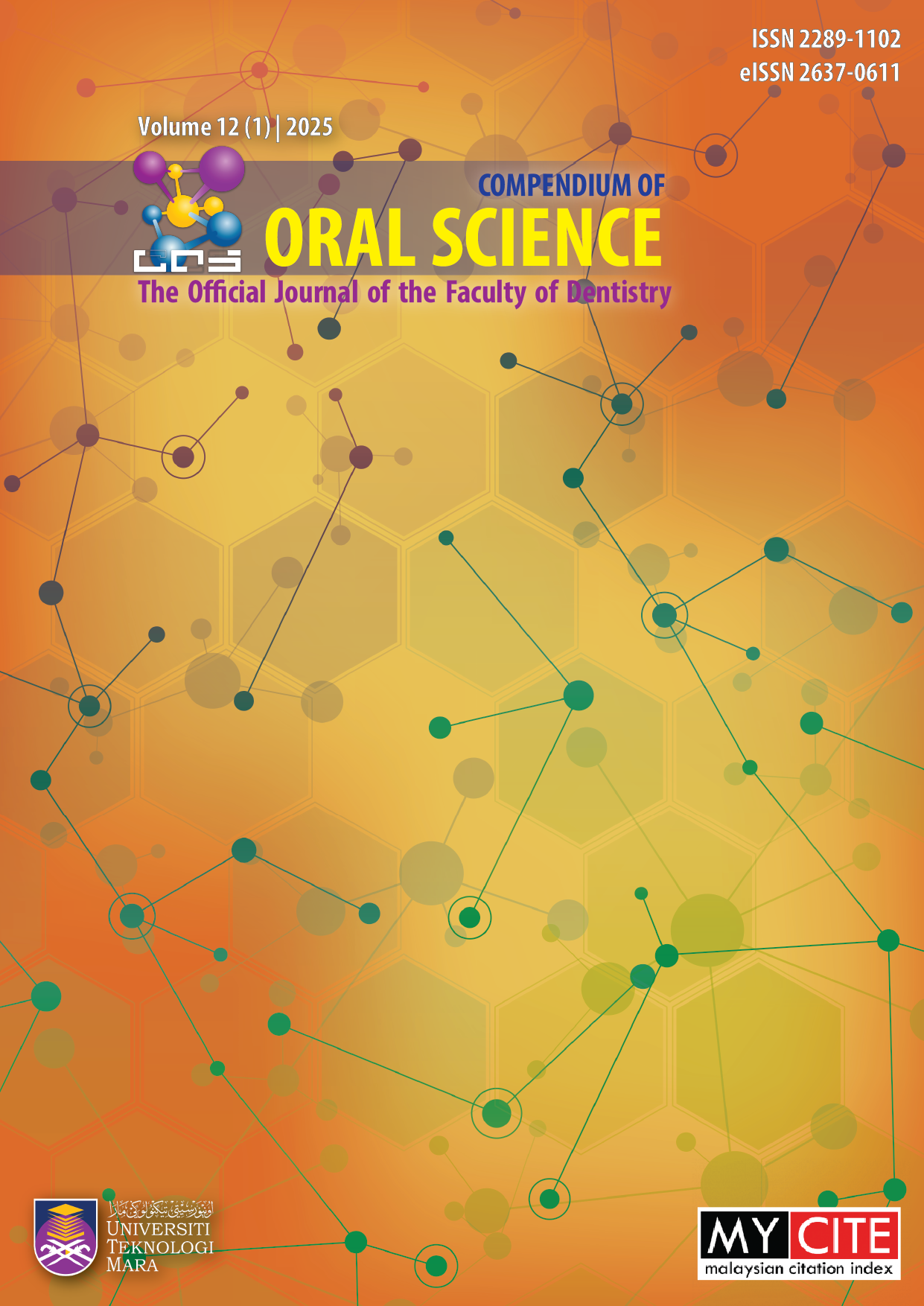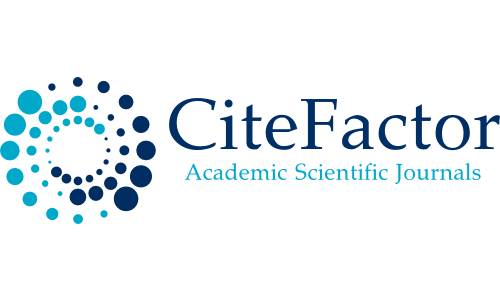Ethnicity and Habits in p53 Gene Mutation in Oral Squamous Cell Carcinoma
DOI:
https://doi.org/10.24191/cos.v12i1.5647Keywords:
oral squamous cell carcinoma, p53 gene mutations, exon, MLPA, habit, ethnicityAbstract
Objectives: Our previous study demonstrated that 31% (n=58/18) of OSCC patients have p53 gene mutation. In this study, we investigate the relationship of ethnicity and habit to p53 gene mutation of oral squamous cell carcinoma (OSCC). Methods: The present study used Multiplex Ligation-dependent Probe Amplification (MLPA) to examine p53 gene mutation from exon 1 to 11. DNA specimens from 58 OSCC patients and 10 healthy people (controls) were used in this study. Our results demonstrated that 31% (n=58/18) of OSCC patients have p53 gene mutation. Among them 56% (n=10/18) of mutation occurred in exon 3, followed by exon 4 which was 50% (n=9/18). Result: The Malay, Indian, and Chinese ethnic groups each accounted for 28% of OSCC patients with p53 gene mutations. 56% of the individuals had a habit of smoking, drinking alcohol, or chewing betel quid.56% of the individuals had a habit of smoking, drinking alcohol, or chewing betel quid. Sixty percent (n=6) of Chinese and Malay patients have mutations in almost all exons, while Indian patients primarily have mutations in exon 4. Conclusion: Our current study suggests that further investigation is needed to understand the relationship between ethnicity, habits, and their interaction with genetic and epigenetic modifiers in exon-specific p53 mutations.
Downloads
Published
How to Cite
Issue
Section
License
Copyright (c) 2025 Compendium of Oral Science

This work is licensed under a Creative Commons Attribution-NonCommercial 4.0 International License.
Materials contained in the journal may be reproduced for educational purposes provided that both the author(s) and the journal are appropriately recognised; otherwise duplication is not permitted. No articles, reports, or portions there of may be translated into other languages, published in books, journals, magazines, or any other print form without written permission from the authors and from the journal.
Disclaimer: The statements, opinions and data expressed in the articles and reports herein are those of the author(s) and not of the publisher and the editor(s). The publisher and the editor(s) disclaim responsibility for any injury to persons or property resulting from any schemes, methods, instructions or ideas referred to in the content.















